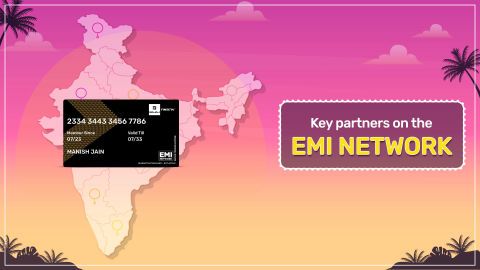When it comes to mid-range processors, the Snapdragon 4 Gen 1 and Snapdragon 780G stand out for different reasons. The Snapdragon 4 Gen 1 is designed to offer solid performance with power efficiency, making it ideal for everyday tasks and moderate gaming. It features an octa-core CPU and is built on a more advanced node, which contributes to better battery life and efficient thermal management. On the other hand, the Snapdragon 780G is geared towards users who demand higher performance and advanced features. It boasts a more powerful GPU, supports higher camera resolutions, and offers enhanced AI capabilities, making it a suitable choice for photography enthusiasts and avid gamers.
In terms of connectivity and additional features, the Snapdragon 780G takes the lead with its support for Wi-Fi 6 and 5G capabilities, providing faster and more reliable internet speeds. Additionally, it incorporates Qualcomm's Elite Gaming features, which ensure smoother gameplay and better graphics rendering, making it one of the
best gaming mobile phones in its segment. The Snapdragon 4 Gen 1, while not as advanced, still supports 5G and offers a reliable performance for standard mobile usage. This Snapdragon 4 Gen 1 vs Snapdragon 780G comparison highlights that while both processors have their merits, the choice ultimately depends on your specific needs and budget. For a detailed list of devices powered by these processors, check out our selection of
Snapdragon processor phones.
Technical specifications - Snapdragon 4 Gen 1 vs Snapdragon 780G
General info
Understanding the general specifications of Snapdragon 4 Gen 1 and Snapdragon 780G provides a foundation for their overall capabilities. Announced at different times, each processor belongs to a distinct class and is identified by its unique model number.
| Specification | Snapdragon 4 Gen 1 | Snapdragon 780G |
| Announced Date | 26 June 2023 | 25 March 2021 |
| Class | Mid-range | Upper mid-range |
| Model number | SM4375 | SM7350-AB |
| Brand | Qualcomm | Qualcomm |
CPU
The CPU architecture and core configurations of Snapdragon 4 Gen 1 and Snapdragon 780G determine their processing power. Each processor features a different setup to cater to various performance needs.
| Specification | Snapdragon 4 Gen 1 | Snapdragon 780G |
| Architecture | Kryo 460 | Kryo 670 |
| Cores | Octa-core (4x2.0 GHz & 4x1.8 GHz) | Octa-core (1x2.4 GHz, 3x2.2 GHz & 4x1.9 GHz) |
| Frequency | Up to 2.0 GHz | Up to 2.4 GHz |
| Instruction set | ARMv8-A | ARMv8-A |
| Process | 6 nm | 5 nm |
| TDP (Sustained power limit) | 5W | 5W |
| Manufacturing | TSMC | Samsung |
Graphics
The GPU specifications indicate the graphic rendering capabilities of Snapdragon 4 Gen 1 and Snapdragon 780G. These features are crucial for gaming and multimedia experiences.
| Specification | Snapdragon 4 Gen 1 | Snapdragon 780G |
| SoC | Qualcomm | Qualcomm |
| GPU name | Adreno 619 | Adreno 642 |
| Architecture | Adreno | Adreno |
| GPU frequency | 950 MHz | 800 MHz |
| Execution units | 1 | 1 |
| Shading units | 128 | 128 |
| Total shaders | 128 | 128 |
| FLOPS | 1.4 TFLOPS | 2.2 TFLOPS |
| Vulkan version | 1.1 | 1.1 |
| OpenCL version | 2.0 | 2.0 |
| DirectX version | 12 | 12 |
Memory
Memory specifications highlight the capacity and speed of data handling for Snapdragon 4 Gen 1 and Snapdragon 780G. These attributes affect multitasking and overall device performance.
| Specification | Snapdragon 4 Gen 1 | Snapdragon 780G |
| Memory type | LPDDR4x | LPDDR4x |
| Memory frequency | 2133 MHz | 2133 MHz |
| Bus | 2 x 16-bit | 2 x 16-bit |
| Max bandwidth | 17 GB/s | 25.6 GB/s |
| Max size | 8GB | 16GB |
Multimedia (ISP)
Multimedia capabilities of Snapdragon 4 Gen 1 and Snapdragon 780G include camera support, video capture, and playback features, which are essential for high-quality media experiences.
| Specification | Snapdragon 4 Gen 1 | Snapdragon 780G |
| Storage type | UFS 2.1 | UFS 3.1 |
| Max display resolution | FHD+ (2520x1080) | QHD+ (3360x1440) |
| Max camera resolution | 64 MP | 192 MP |
| Video capture | 1080p at 60 fps | 4K at 30 fps |
| Video playback | 1080p at 60 fps | 4K at 60 fps |
| Video codecs | H.264, H.265, VP8, VP9 | H.264, H.265, VP8, VP9 |
| Audio codecs | AAC, aptX, MP3, WMA | AAC, aptX, MP3, WMA, FLAC |
Connectivity and network
Connectivity and network specifications of Snapdragon 4 Gen 1 and Snapdragon 780G define their communication capabilities, including support for different network types and wireless technologies.
| Specification | Snapdragon 4 Gen 1 | Snapdragon 780G |
| Modem | X51 | X53 |
| 4G support | Yes | Yes |
| 5G support | Yes | Yes |
| Download Speed | Up to 2.5 Gbps | Up to 3.3 Gbps |
| Upload Speed | Up to 1.5 Gbps | Up to 1.5 Gbps |
| Wi-Fi | Wi-Fi 5 | Wi-Fi 6 |
| Bluetooth | 5.2 | 5.2 |
| Navigation | GPS, GLONASS, BeiDou, Galileo | GPS, GLONASS, BeiDou, Galileo |
Benchmarking - Snapdragon 4 Gen 1 vs Snapdragon 780G
When evaluating the performance of Snapdragon 4 Gen 1 vs Snapdragon 780G, benchmark tests provide a quantitative analysis. The following benchmarks highlight the capabilities of these processors in various scenarios, helping users understand their real-world performance.
AnTuTu 10
AnTuTu 10 provides a comprehensive evaluation of the CPU, GPU, memory, and user experience (UX) of both processors. The total score reflects their overall performance, making it easier to compare their efficiency and power.
| Component | Snapdragon 4 Gen 1 | Snapdragon 780G |
| CPU score | 120,000 | 200,000 |
| GPU score | 90,000 | 160,000 |
| Memory score | 50,000 | 70,000 |
| UX score | 40,000 | 80,000 |
| Total score | 300,000 | 510,000 |
GeekBench 6
GeekBench 6 measures the single-core and multi-core performance across various tasks, including asset compression, HTML5 browsing, PDF rendering, image detection, and more. This test reveals the processing power and efficiency of both processors.
| Component | Snapdragon 4 Gen 1 | Snapdragon 780G |
| Asset compression | 800 | 1200 |
| HTML5 browse | 1000 | 1500 |
| PDF render | 700 | 1100 |
| Image detection | 900 | 1400 |
| HDR | 650 | 1200 |
| Background blur | 600 | 1000 |
| Photo Processing | 700 | 1300 |
| Ray tracing | 500 | 900 |
3DMark
3DMark evaluates the graphics performance of the processors through various tests, focusing on stability, graphics rendering, and overall score. This benchmark is crucial for understanding the gaming capabilities of the Snapdragon 4 Gen 1 and Snapdragon 780G.
| Component | Snapdragon 4 Gen 1 | Snapdragon 780G |
| Stability | 85% | 90% |
| Graphics test 1 | 700 | 1200 |
| Graphics test 2 | 650 | 1100 |
| Total score | 10,000 | 17,000 |
Explore Snapdragon mobiles on the lowest EMI from Bajaj Finserv
Bajaj Mall is the best online destination for you to read about all the details, features, and specs of the Snapdragon 4 Gen 1 vs Snapdragon 780G. Once you have gathered all the information you want, head to the nearest Bajaj Finserv partner store and select the Snapdragon 4 Gen 1 vs Snapdragon 780G you want. Use the Bajaj Finserv Insta EMI Card which comes with a pre-approved card limit of up to Rs. 3 lakh to make the payment. You can choose a convenient repayment tenure of your choice and repay your purchase in interest-free EMIs.
Advantages of shopping using the Bajaj Finserv Insta EMI Card
Competitive prices: Bajaj Finserv offers competitive pricing, ensuring that your purchase is budget-friendly.
Low Cost EMIs: With the
Bajaj Finserv Insta EMI Card, buying your desired product becomes hassle-free. Choose a preferred tenure between 3 months to 60 months and repay in interest-free EMIs.
Zero down payment: Forget about the hassles of an initial lump sum payment as select products are covered under the zero down payment policy.
Options and accessibility: Buying your favourite products have never been this easy! The Bajaj Finserv EMI Network hosts over 1 million products, available at 1.5 lakh+ partner stores, across 4,000+ cities.
Exciting deals and cashback offers: By using the Bajaj Finserv Insta EMI Card to purchase your desired product, you gain access to exciting deals and cashback offers.
Free home delivery: To add to your convenience, select products are delivered free of cost.
Mobile by brandsMobile by budget5G Mobiles by brand5G Mobiles by budget











